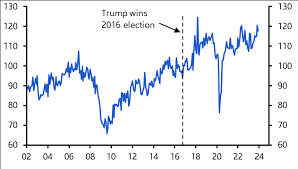The Impact of Trump Tariffs on Global Trade

Introduction: The Importance of Trump Tariffs
Tariffs imposed during Donald Trump’s presidency have significantly influenced global trade dynamics and the U.S. economy. Initially enacted to protect American industries, these tariffs have resulted in contentious negotiations, retaliatory measures, and broader discussions about international trade policies.
Background on Trump Tariffs
Starting in 2018, the Trump administration implemented tariffs on various goods, particularly targeting China. The administration justified these tariffs primarily by claiming they aimed to reduce the trade deficit while encouraging American manufacturing. Key tariffs included a 25% tax on steel and a 10% tax on aluminium, alongside an extensive range of tariffs on Chinese imports that collectively amounted to billions of dollars.
Effects on the U.S. Economy
The immediate ramifications of these tariffs included rising prices for imported goods, which affected consumers and businesses alike. According to a 2020 report by the Federal Reserve, the tariffs contributed to price increases on everyday items, raising concerns about inflation. Additionally, U.S. producers benefitted in some sectors but faced supply chain disruptions as many businesses relied on imported materials.
International Relations and Retaliation
Trump’s tariffs sparked a trade war, particularly with China, which retaliated by imposing its own tariffs on U.S. products. This tit-for-tat approach created uncertainty in international markets, leading to decreased exports and strained relations. Agricultural sectors, especially, felt the impact as Chinese tariffs on American crops led to economic losses for farmers across the United States. In response, the U.S. government introduced aid packages to support affected farmers.
Current Status and Future Prospects
As of late 2023, the Biden administration has taken a more measured approach to tariffs, re-evaluating many of the previous measures. There is ongoing discussion around potential reforms in trade policy aimed at easing tensions while protecting vital industries. Observers suggest a shift towards multilateral agreements may be more sustainable compared to unilateral tariff applications.
Conclusion: Significance of Trump Tariffs
The tariffs instituted during Trump’s presidency have left a lasting mark on trade practice and economic policy. With inflationary pressures and evolving international relationships, their legacy continues to shape discussions about trade in the United States. As the world grapples with ongoing economic challenges, the lessons learned from these strategies may inform future policies aimed at balancing protectionism with global cooperation.









